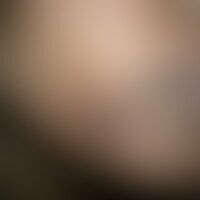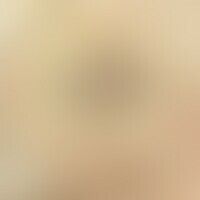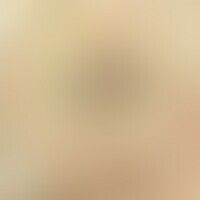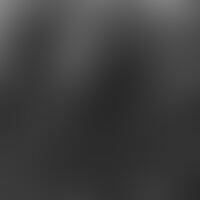Image diagnoses for "Nodules (<1cm)", "Face"
118 results with 257 images
Results forNodules (<1cm)Face
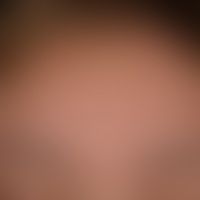
Polymorphic light eruption L56.4
Lichtermatosis polymorphic: Occurrence of clinical symptoms a few hours to days after (single and first-time) intensive sun exposure with itching and burning, disseminated papules and papulo-pustules also papulo-vesicles.

Acne papulopustulosa L70.9
Acne papulopustulosa: acne-typical distributed inflammatory papules, few pustules next to older and fresh scars.
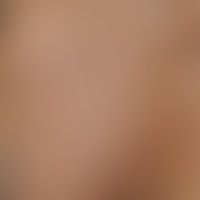
Acne conglobata L70.1
Acne conglobata: in acne-typical distribution, brown papules, nodules, papulo-pustules, aggregated in places, distinct seborrhoea.

Dyskeratosis follicularis Q82.8
Dyskeratosis follicularis (Darier's disease) Disseminated, yellow-brownish papules and plaques, sometimes covered with small crusts.
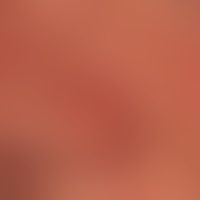
Adenoma sebaceum Q85.1
adenoma sebaceum: diffuse distribution of skin-coloured, shiny papules and plaques. conspicuously bizarre telangiectasias, partly present in the papules and in the surrounding area. no folliculitis, no comedones.
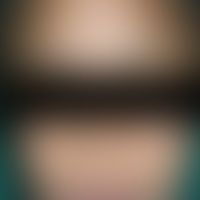
Acne papulopustulosa L70.9
Acne papulopustulosa: acne-typically distributed, brown papules and papulo-pustules in different stages of development.
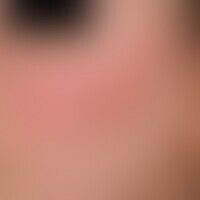
Rosacea L71.1; L71.8; L71.9;
Stage IIrosacea (rosacea papulopustulosa) with grouped, inflammatory papules and pustules in the cheek area of a 26-year-old female patient, first manifestation 3 months ago.
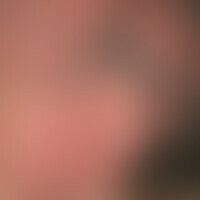
Field carcinogenesis
Field carcinogenesis: preneoplastic skin area with multiple precanceroses, condition after excessive UV-irradiation.
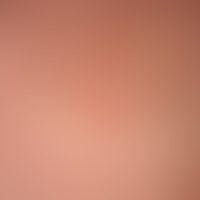
Juvenile xanthogranuloma D76.3
Xanthogranulom juveniles (sensu strictu). solitary, softly elastic, yellowish, completely painless plaque, composed of surface smooth papules about 01.-0.3 cm in size. 6-month-old female infant. size growth in the first months of life.

Keratosis pilaris Q80.0
Keratosis follicularis. follicle-bound horny papules on cheeks, eyebrows and extensor sides of the limbs. follicular keratoses in the cheek area are associated with a persistent areal redness (erythema perstans faciei s.dort), which in the area of the eyebrows is associated with the clinical picture of "Ulerythema ophyogenes".
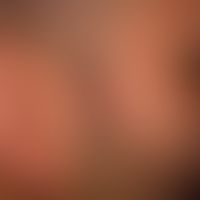
Acne conglobata L70.1
Acne conglobata: symmetrically distributed, eminently chronic, inflammatory melting papules and pustules and severe scarring.
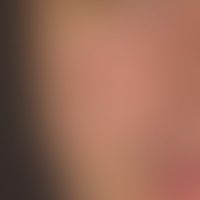
Early syphilis A51.-
Syphiis: papular syphilide, acne-like clinical picture with disseminated, non-itching, occasionally eroded, scaly papules.
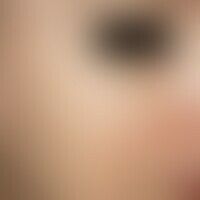
Acne excoriée L70.8
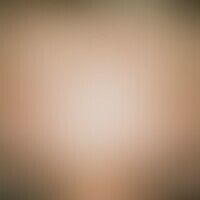
Multiple Trichoepithelioma D23.-
Trichoepitheliomas: diffusely distributed, small, skin-coloured papules in the forehead area.

Folliculitis barbae L73.8
Folliculitis barbae: Chronic, therapy-resistant, inflammatory, itchy (lesions show signs of scratching) follicular papules in the area of the cheeks
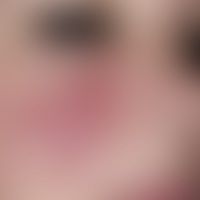
Rosacea fulminans L71.8
Rosacea fulminans: a peracute clinical picture with fluking, painful nodules; development of undermined ulcers.

Ulerythema ophryogenes L66.4
Ulerythema ophryogenes: the area marked by the square shows follicular papules (keratosis follicularis) on an enlarged scale with a reddened courtyard which merges into a two-dimensional erythema.
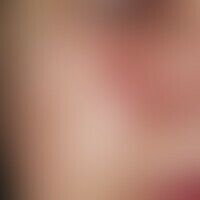
Multiple Trichoepithelioma D23.-
Trichoepithelioma: long persistent, multiple, asymptomatic, rough, hemispherical, skin-coloured to reddish, symmetrically arranged papules; unusually pronounced, rarely seen findings

Leprosy lepromatosa A30.50
Leprosy lepromatosa: Boderline type of leprosy lepromatosa; inflammatory type I reaction (leprosy reaction) in the existing leprosy herds.
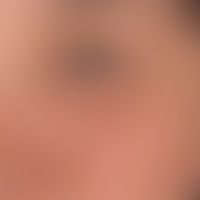
Lupus erythematodes chronicus discoides L93.0
lupus erythematodes chronicus discoides: 35-year-old otherwise healthy patient. skin lesions since 12 months, gradually increasing, no photosensitivity. multiple, chronically stationary, touch-sensitive, red, plaques with central adherent scaling. histology and DIF are typical for erythematodes. ANA and ENA were negative.
